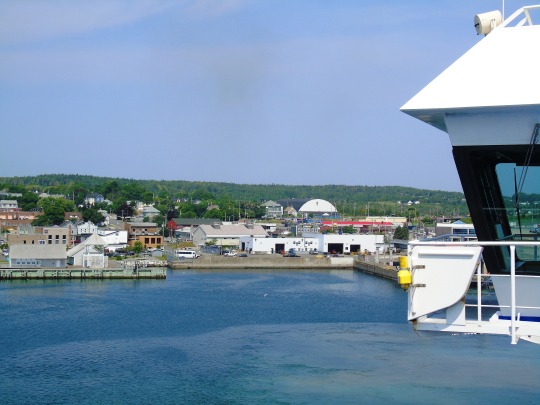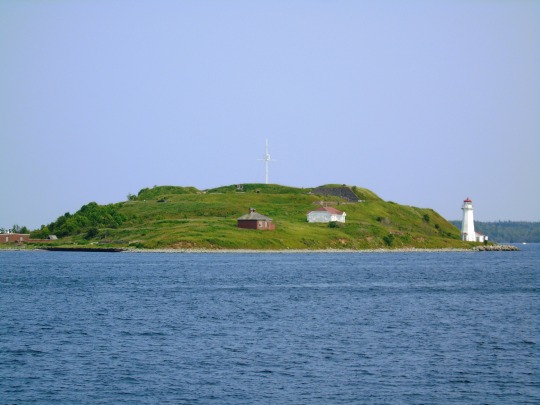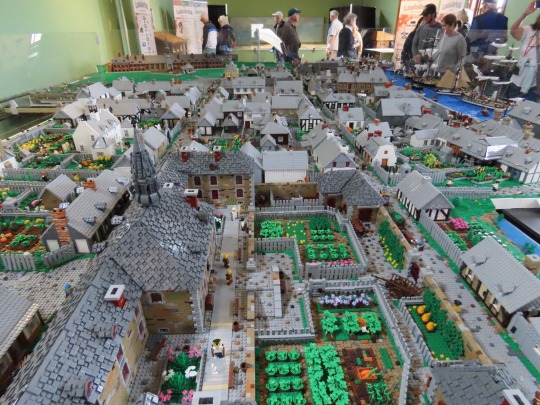#cape breton island
Explore tagged Tumblr posts
Text

By Johnathan R
Cape Breton, Nova Scotia, Canada
#curators on tumblr#canada#travel#nature#landscape#north america#nova scotia#cape breton#cape breton island#johnathan r
76 notes
·
View notes
Text




























Nova Scotia Heritage Day
Nova Scotia Heritage Day is a lively and meaningful holiday celebrating the province’s rich cultural history.
Honoring different facets of Nova Scotia’s past, Heritage Day helps foster a sense of unity and respect among its residents. It encourages learning about the diverse backgrounds that make up the community, from Indigenous traditions to African Nova Scotian legacies.
This annual celebration is not just about remembering the past but also about embracing the present and looking forward to a future of inclusivity and diversity.
How to Celebrate Nova Scotia Heritage Day
Discover Local History
Dive into Nova Scotia’s past by visiting museums and historical sites. Many offer free admission on Heritage Day.
This includes the Maritime Museum of the Atlantic and the Museum of Natural History. Exploring these places will give a vivid glimpse into the province’s vibrant history.
Enjoy Cultural Performances
Attend live performances showcasing local music, dance, and storytelling. These events highlight the province’s diverse cultural heritage.
Look for shows featuring Mi’kmaq drummers, Acadian musicians, and African Nova Scotian artists. They bring history to life in the most entertaining ways.
Sample Traditional Foods
Celebrate Heritage Day by indulging in traditional Nova Scotian foods. Try some fresh seafood, like lobster or scallops.
Remember the beloved Nova Scotian treat: blueberry grunt. Cooking and sharing these dishes can be a delicious way to honor the province’s culinary traditions.
Participate in Community Activities
Join local events and activities organized in your community. Many towns host parades, craft fairs, and workshops.
These gatherings provide a fun way to connect with others while learning more about Nova Scotia’s rich heritage.
Explore the Outdoors
Take advantage of the holiday by enjoying Nova Scotia’s natural beauty. Go for a hike, visit a provincial park, or stroll along the coast.
The stunning landscapes are a big part of what makes this province special. Fresh air and beautiful scenery make for a perfect Heritage Day outing.
Why Celebrate Nova Scotia Heritage Day?
Each year on this day, people across Nova Scotia take a break to honor significant individuals, places, or events that have shaped the region. This holiday provides a unique opportunity to reflect on the diverse heritage that contributes to the province’s identity.
The reasons behind celebrating Heritage Day are deeply rooted in recognizing and appreciating the contributions of various communities.
For instance, past honorees include African Nova Scotian civil rights activists, Indigenous leaders, and notable historical sites like the Grand Pré. These honorees are selected to highlight their remarkable impact on Nova Scotia’s culture and history.
History of Nova Scotia Heritage Day
Nova Scotia Heritage Day recognizes the rich cultural and historical contributions within the province. The push for a mid-winter holiday led to the introduction of this day in December 2013. By 2015, the first official Heritage Day was celebrated, marking the start of a new tradition in Nova Scotia.
The creation of Heritage Day involved a unique approach. The Department of Labour and Advanced Education engaged students from primary to grade 12 across Nova Scotia. These students were asked to propose names and suggest notable individuals, places, or events that have shaped the province.
A panel reviewed the submissions and selected honorees for the next twelve years. This process not only gave the holiday its name but also ensured that each year, a different facet of Nova Scotia’s heritage is celebrated.
Over the years, honorees have included influential figures like Viola Desmond, a pioneering businesswoman and civil rights activist, and significant sites like the Landscape of Grand Pré.
These selections reflect the diverse and rich history of Nova Scotia, showcasing contributions from various communities and historical periods.
Heritage Day thus serves as a platform to educate and unite residents by highlighting the province’s storied past!
Nova Scotia Heritage Day FAQs
- Why does Nova Scotia Heritage Day honor different themes annually?
The idea behind highlighting a new theme each year is to showcase the depth of Nova Scotia’s diverse heritage.
By celebrating various historical figures, communities, or landmarks, the province ensures that lesser-known contributors get recognition alongside iconic names.
For instance, the Landscape of Grand Pré, honored in 2022, underscores Acadian resilience and agricultural ingenuity, while Viola Desmond’s commemoration in 2015 brought attention to civil rights.
This rotating focus keeps the holiday fresh and educational, encouraging the public to explore different chapters of Nova Scotia’s story.
- Are there any fascinating traditions tied to Nova Scotia Heritage Day?
Communities host unique celebrations, blending education and entertainment.
Halifax museums offer free entry, presenting exhibits tied to the year’s theme. Local storytellers revive historical events, and musicians play traditional Acadian, Mi’kmaq, or African Nova Scotian tunes.
Some towns even recreate old-time fairs with crafts, food, and games that reflect Nova Scotia’s cultural mosaic.
These immersive experiences bridge the gap between past and present, making history accessible and fun.
- Is there a surprising story behind the founding of Nova Scotia Heritage Day?
The holiday’s origins tie back to a practical need for a mid-winter holiday, coupled with a desire to recognize the province’s rich history.
In 2013, public consultations sparked the idea to dedicate this holiday to Nova Scotia’s cultural legacy.
Interestingly, students played a crucial role by suggesting honorees, making it one of the rare holidays shaped partly by youth input. This participatory approach ensures the day reflects community values.
- Has Nova Scotia Heritage Day ever honored the Indigenous Mi’kmaq culture?
Yes, Mi’kmaq contributions have been celebrated. For instance, the 2023 honoree Rita Joe was a Mi’kmaq poet known as the “voice of her people.”
Her work captures Indigenous resilience and pride, offering insight into Mi’kmaq traditions.
Events that year highlighted their songs, dances, and crafts. Honoring Mi’kmaq culture reinforces the province’s commitment to reconciliation and recognition of its Indigenous roots.
- How do rural communities celebrate Nova Scotia Heritage Day?
In smaller towns, the day becomes a grassroots celebration. Volunteer-led events include quilting bees that replicate historical designs, or potluck dinners featuring Acadian and Scottish dishes.
Some villages host heritage walks, where residents share oral histories about local landmarks.
These intimate gatherings create a sense of connection and ensure that even remote areas participate in preserving Nova Scotia’s past.
- Are there any amusing myths related to Nova Scotia Heritage Day?
One common misconception is that Nova Scotia Heritage Day is only for historians or museum-goers.
In reality, the day has evolved to include everything from cooking competitions to live performances.
Another amusing myth suggests that the holiday’s date was chosen to break up the monotony of February—not entirely untrue!
Its placement was partly inspired by other provinces’ Family Day celebrations but given a uniquely cultural twist.
- How does Nova Scotia Heritage Day inspire future generations?
By involving students in choosing themes and creating projects, the holiday fosters early engagement with history.
Schools organize essay competitions, art projects, and reenactments tied to the honoree. In 2023, students across the province explored Rita Joe’s poetry, creating visual art inspired by her verses.
These activities help young people see themselves as part of an ongoing story, encouraging them to preserve and expand Nova Scotia’s legacy.
- Have any honorees been surprisingly modern figures?
While many honorees are historical, some are surprisingly modern. Viola Desmond, celebrated in 2015, gained posthumous fame after becoming the face of Canada’s $10 bill in 2018.
Honoring figures like her bridges the gap between history and contemporary social movements. This modern relevance makes the holiday resonate more deeply with today’s audience.
- Are there unique foods prepared during Nova Scotia Heritage Day?
Nova Scotia’s food heritage shines during celebrations. Seafood chowder, a staple, reflects the province’s maritime identity.
Blueberry grunt, a dessert made with local berries, often appears at potlucks. Some events feature bannock, a traditional Indigenous bread.
These dishes bring communities together, blending culinary traditions from Acadian, Mi’kmaq, and Scottish cultures.
- Could Nova Scotia Heritage Day expand beyond the province?
While unique to Nova Scotia, the holiday has inspired interest in creating similar observances elsewhere in Canada.
Advocates suggest expanding it nationally to celebrate each province’s heritage, similar to how Family Day started regionally.
This idea reflects growing awareness of the importance of preserving local histories.
Source
#Halifax#travel#original photography#vacation#tourist attraction#landmark#cityscape#architecture#landscape#Fort George#Halifax Citadel#Nova Scotia Heritage Day#Stellarton#Sydney#North Sydney#Cape Breton Island#Caribou#Third Monday in February#17 February 2025#NovaScotiaHeritageDay#summer 2015
2 notes
·
View notes
Text








A rare day that's without a real agenda - just goofing around and taking the time to recoup from the thousands of miles on the odometer for the last two weeks! To be honest, my typical mileage per trip easily equates to a year's worth of driving distance back home, something still quite unbelieveable to many. That's the intensity and proportion of time I spend traveling!
Enjoy St. Ann's privincial park and whatever I felt like pulling over as I wheel towards New Glasgow for the night.
The Alexander Grahm Bell National Historic Site was next, where a Silver Dart monument can be found within its premise.





#St Ann's Provincial Park#Nova Scotia#Piglet#Cape Breton Island#Nikon Zfc#Nikon Studio#Alexander Graham Bell National Historic Site#Baddeck
4 notes
·
View notes
Text

CA 2020 $2.71 Cabot Trail, Cape Breton Island, Nova Scotia
#ca#canada#2020s#landscape#nova scotia#cape breton island#stamp#stamps#philately#stamp collection#snail mail#postage#postage stamp#usps
3 notes
·
View notes
Text
Repost: Mermaid Tears From Nova Scotia!
Continue reading Repost: Mermaid Tears From Nova Scotia!

View On WordPress
#beach glass#Cape Breton Island#mermaid tears#Nova Scotia#Postaday#Prince Edward Island#sea glass#tourism
2 notes
·
View notes
Text
Terra Firma!
Friday 21st June 2024 – Sydney, Nova Scotia.
After the party yesterday, Dinner in the main Restaurant was surprisingly subdued. I’m not sure where everyone was but at least service was quicker; we were in and out in 75 minutes!


Oysters Rockefeller were on the menu; one of my favourite dishes. I wasn’t so keen on the Pesto Risotto in my main course though but the Herb Marinated Jumbo Shrimp were nice. Oddly (me not being much of a dessert person), the Citrus Symphony (parfait, two types of meringue and citrus marmalade) lived up to its name and was a great refresher.

Today we finally arrived in Sydney, Nova Scotia and most of Viking Star’s passengers I suspect breathed a sigh of relief, able to step on dry land for the first time in 6 days!

Founded in 1785 by colonists fleeing the aftermath of the American Revolution, Sydney became a centre of development from coal-mining in the 18th Century. However, while the decline of coal and steel during the 20th Century was replaced by tourism in Cape Breton Island, Sydney was largely overlooked as a tourist centre until some years ago, when they invested in a new Cruise Terminal, outside which stands the World's largest ceiledh fiddle, in celebration of the area's Celtic tradition!.

Sydney was once the capital of Cape Breton Island until 1820 when Cape Breton Island was merged into Nova Scotia and the capital moved to Halifax (where we will be tomorrow). There is some history here though and today, Angie and I took the ‘free’ excursion to the Fortress of Louisbourg.

Developed by the French as a fortified town to protect rich fishing grounds from 1720-40, it was laid siege to and won by the British in 1745, then given back to the French in 1748, only to be captured again 1758, following which, it was systematically destroyed and its stone shipped elsewhere.

The present buildings on the site are reconstructions and represent around 20% of the original town as it was in 1744 just before the first siege.


We had an interesting tour, including a musket-firing demonstration by a Canonier and a typical hot chocolate drink enjoyed by the better off of the town. And in one of the buildings there was an enormous model of Fortress Louisbourg made entirely out of Lego!

Blessed by unseasonably warm weather today, with temperatures up to 23 degrees, there was an ‘Officers’ Sailaway Party’ on the pool deck – with more free drinks served by some of the senior officers. I had a ‘Rock Lobster’ (Rum, Banana liqueur, Malibu, Orange Juice, Pineapple Juice & Grenadine) as well as ‘Sex on the Beach’ (Vodka, Peach Schnapps, Orange Juice, Cranberry Juice)! I then went for a lie down……
#cruise#viking cruises#iceland#greenland#newfoundland#cape breton island#sydney#nova scotia#louisbourg
1 note
·
View note
Text

Our thoughts are with the Maritimes after this week's epic snowfall.
#Main Street#Sydney#Cape Breton#Nova Scotia#snowstorm#Prince Edward Island#New Brunswick#blizzard#5' of snow#Maritimes#downtown#abandoned cars#Canadian winter
21 notes
·
View notes
Text




songs from cape breton island, 1955
#songs from cape breton island#i was so happy to find this pdf floating around in the wilderness of the internet
3 notes
·
View notes
Text

Copy & paste this in Google Translate Auto Detect & into English:
Chuidich na beòthachaidhean sin mi gus mo leasachadh mar an neach a tha mi. Ge bith dè an ìre de Inbheach, Jock, Janegirl no Nerd a th’ annam. Bidh mi an-còmhnaidh a’ comharrachadh mo thraidiseanan mar an teis-meadhan airson cò tha mi -Nate St Aidan- mar Fhrangach-Quebec, Acadien, Gàidhlig, ('s dòcha Metis) Neo-nàiseantach, Neach-iomairt, Ceannard & dìonadair.
Bidh mi a’ coisrigeadh a’ mhìorbhail seo a thaobh far am biodh daoine beòthail nan robh cothrom aca air beatha nas fheàrr no eadar-dhealaichte ann an Atlantic Canada. Dìreach mar a tha Glooskap & alt beul-aithris a’ fuireach an seo am measg cridheachan is subhachasan sgeulaichean.
#cartoon#animation#cape breton#prince edward island#nova scotia#halifax#new brunswick#atlantic ocean#arctic ocean#gravity falls#maps#proud family#kevin stoley#red mcarthur#south park#amphibia#anne boonchuy#catholic#conservative#atla#teen titans#owl house#amity blight#libertys kids#clone high#teletoon#acadien#jinx#arcane#folklore
4 notes
·
View notes
Text
#165 Charlottetown Islanders 4 Cape Breton Eagles 3 - 09 11 2024
youtube
View On WordPress
0 notes
Text
Cape Breton
This rock-strewn shore This stoney Isle This hardened land Of heartened folk That no catastrophe can sunder No hardship wither Nor keep them from the sea This place of no small beauty And gracious souls Cape Breton Continue reading Cape Breton

View On WordPress
#beauty#Canada#Cape Breton#GloPoWriMo#grace#hardship#Islands#NaPoWriMo#Nova Scotia#photography#postaday#sunset
1 note
·
View note
Text





National Violin Day
Tune up your fiddle and get bowing, sign up to instrument lessons or attend a concert to hear the gorgeous sounds of a string orchestra.
The violin is easily the most well-known bowed string instrument across the world, and it is really not all that surprising to see that the violin does in fact have a day dedicated to its existence! After all, everything from Western and Indian classical music to bluegrass and jazz would be unimaginable today without the violin.
It is quite possibly the most versatile instrument in the world in terms of repertoire–and that must be why there is a special day all its own to celebrate the violin.
History of National Violin Day
The violin itself seems to have evolved from medieval instruments that were like fiddles. It came into its own distinct form by the 15th century, becoming the most popular virtuoso instrument in Europe by the 1660s. Most violins made today are copies after either Stradivarius or Amati, the latter being active as a violin maker in the 16th century.
Today, the violin not only remains an indispensable feature of western classical music, but has found its way into various forms of classical and folk music around the world as well as various other genres. There are a lot of violinists and fiddle players throughout the world today, so it is easy to see why National Violin Day has caught on!
In fact, the violin is present in the most prestigious musical groups in the world, including the Venetian Philharmonic Orchestra. Imagine an instrument with such humble beginnings becoming such an important mainstay of modern classical music.
Now it’s time to celebrate the day revolving around this humble instrument!
How to Celebrate National Violin Day
For those who want to get involved with National Violin Day but are not quite sure where to start, these ideas might help to set the stage for the day:
Play the Violin
Well, for those who happen to play the instrument, then it is a no-brainer to go ahead and play the violin in honor of National Violin Day. Get that violin out of its case, tune it, place some rosin on the bow, and get ready to make some beautiful music in honor of the day! And those who are a little bit out of practice might want to invest in some ear plugs for family members.
Go to a Violin Concert
For those who simply want to appreciate the sound of the violin without actually playing it, then it might be a great idea to go to a concert where the instrument would be played on National Violin Day.
Not sure where to go? Try out one of these important groups that is sure to feature a superb violinist or two:
Boston Symphony Orchestra Playing at Symphony Hall in Boston, Massachusetts, this orchestra also features a Young People’s Concert Series to allow the public to hear up-and-coming new talent.
Itzhak Perlman Undoubtedly one of the most talented violinists alive today, Perlman has achieved almost super star status with his instrument.
Trans-Siberian Orchestra Mixing classical music talent with rock band style, this group plays all round the world and, yes, they feature many songs with a violin. It’s not necessarily “classical”, but a modern ear for music just might love it.
Give a Gift to a Favorite Violinist
For those who happen to know someone interested in learning the violin but who doesn’t have an instrument – today would be the perfect occasion to gift that person a violin. Or gift something to a violinist in your circle, even if it’s just some sheet music, some rosin or just a little card to show appreciation for them and their attempt at mastery of the instrument.
The modern violin family includes not only the violin, but also the viola, the violoncello, and the double bass as well. So for those who know any cellists or violists, today would also be a great day to listen to them play or to get them a gift as well!
Watch a Film About the Violin
Interested in learning more but not ready for a live performance yet? That’s okay! National Violin Day is a great way to feed a mild interest by watching a film about the instrument. Whether fiction or documentary, these movies would be a great way to get started:
Music of the Heart (1999), starring Meryl Streep This biographical drama features the true store of Roberta Guaspari, who was a violin teacher in Harlem in the late 1980s.
Orchestra of Exiles (2012), written by Josh Aronson This documentary tells the true story of a Polish violinist who founded the Israel Philharmonic Orchestra.
Small Wonders (1995), directed by Allan Miller This is the Academy Award nominated documentary upon which Music of the Heart was based. It tells the story of the kids in East Harlem and their violinist teacher who went against the odds to play at Carnegie Hall.
A Late Quartet (2012), starring Christopher Walken This movie tells the story of a group of four struggling musicians who face serious challenges when their cellist is diagnosed with Parkinson’s disease.
Start Taking Violin Lessons
For those who have ever had the inclination to learn the violin, or perhaps have one laying around unused, this day is just the perfect time to start taking violin lessons. Start with the basics like brushing up on how to read music and then get to practicing. Don’t forget other important equipment such as a practice mute, extra set of strings, metronome and a comfortable shoulder rest.
Source
#The Source of Country Music by Thomas Hart Benton#Nashville#Tennessee#Country Music Hall of Fame and Museum#Joan Harriss Cruise Pavilion#Sydney#Largest Ceilidh Fiddle in the World#Big Fiddle Market#tourist attraction#cityscape#art#landmark#evening light#Atlantic Ocean#Cape Breton Island#Nova Scotia#water front#National Violin Day#13 December#NationalViolinDay#travel#original photography#vacation#architecture#USA
3 notes
·
View notes
Text
I exist now!
hi Tumblr! I am the Aspec Country! I don't know how else to introduce myself so I'll just tag some people
(sorry if I double tag you)
@aro-sp-ace-force @big-fucking-sagittarius-astar @bisexual-navy @canadian-hellbird @france-unofficial
@gimmickverse-weekly @god-of-death-official @gimmick-swag @genderfluid-marine-corp @i-say-bean
@i-am-the-milky-way-galaxy @its-target-official @libra-the-scales-offical @literally-leo @literally-luxembourg
@might-be-capricorn @moongate-keepers-official @non-tyrannical-usa @official-god-of-order @officially-new-zealand
@official-draco-constellation @officially-capricorn @the-missiles-guy @totally-neptune-official @totally-oregon
@totally-ikea @ursa-minor-probably @ursa-major-actually @walmart-the-official
@youraveragemagicalthief@yahooo-official @duothelingo @i-say-bean @corvus-the-constellation
@and-cassiopeia @officially-taurus @the-official-god-of-chaos @the-real-illinois @the-principality-of-sealand
@the-red-planet-mars @its-target-official @guatemala-official @the-gimmick-authority @thestateoflouisiana
@amul-unofficial @official-the-united-states @official-denmark @denmark-forreal @denmark-official
@denmarklandia-official @actually-danish-denmark @official-hongkong @official-ireland @definitelytherepublicofireland
@actually-literally-ireland @forever-scotland @totally-france @france-unofficial @russia-totallyofficial
@germany-official @totally-germany @genuinely-germany @definitely-britain
@definitely-canada @official-new-zealand @india-official @yugoslavia-official @wales-official
@the-offical-roman-empire @the-official-italy @guatemala-official @totally-italy @the-principality-of-sealand
@definitely-brasil @holy-roman-empire-revived @spain-unofficial @very-real-australia @antiquitian-empire
@literally-luxembourg @100-percent-real-official-malta @totally-japan @therealrepublicofkorea @pakistan-official
@i-am-poland @kingdom-of-asgardia-real @very-much-mexico @republic-of-molossia @the-kingdom-of-norway
@sweden-official @non-tyrannical-usa @the-entire-country-of-sweden @greenland-offical @the-state-of-michigan
@state-of-0hio-official @cape-breton-island-itself @state-of-florida-official @state-of-connecticut-official @the-us-navy-offical
@the-us-navy @the-real-illinois @the-state-of-georgia-official @mhm-wisconsin @rejasthanofficial
@stateofuttarpradeshindiaofficial @the-only-ontario @actually-alberta @newjersey-official @new-york-for-real
@definitely-indiana @the-province-of-nova-scotia-real @femboy-state-of-florida-official @the-republic-of-texas
@new-hampshire-real @unofficial-illinois @newhampshireofficial @saskatchewan-real @quebec-official
@texas-real @rhode-island-real @we-are-not-the-feds @totally-texas @telangana-official
@sovereign-state-of-alaska @tamil-nadu-official @west-bengal-official @this-is-goa @totally-oregon
@buffalony-official @maharashtra-official @kolkatabbg @gujarat-official @axom-miss
@karnatakaofficial @canadian-tire-real @tamilnadu-official @bihar-official @mumbai-official
@communist-usa-real @officially-gay-va @definitely-north-america @antarcitica-official @official-the-pacific-ocean
@the-real-atlantic-ocean @bangladesh-official @hyderabad-unofficial @delhi-the-capital @the-lovely-planet-earth
@totally-italy @france-unofficial @totally-france @the-official-italy @the-wonderful-jupiter
@speckled-callisto @deimos-moon-of-terror @moon-of-fear-phobos @decafcatfeen @the-real-eris
@the-real-illinois @the-official-goose-god @india-official @pakistan-official @asteroid-belt-resident-ceres
@genuinely-germany @antiquitian-empire @actually-mtn-dew @spain-unofficial @definitely-brasil
@definitely-britain @definitely-canada @very-real-australia @zoozve-official @the-province-of-nova-scotia-real
@the-problemo @unusuallyy @concrete-the-cat @official-denmark @official-hongkong
@official-planet-pluto @truly-pluto @truly-the-sun @its-target-official @i-am-poland
@ruhrpott-i-guess @non-tyrannical-usa @the-gimmick-authority @realsafari @official-new-zealand
@google-news-official @guatemala-official @forever-scotland @definitely-waste-management
221 notes
·
View notes
Text
i think we should all listen to this song :3
youtube
@official-denmark @denmark-forreal @denmark-official @denmarklandia-official
@actually-danish-denmark @official-hongkong @official-ireland @definitelytherepublicofireland @actually-literally-ireland
@forever-scotland @totally-france @france-unofficial @russia-totallyofficial
@germany-official @totally-germany @genuinely-germany @definitely-britain @definitely-canada
@official-new-zealand @nihonkokuu @india-official @yugoslavia-official @wales-official
@the-offical-roman-empire @the-official-italy @guatemala-official @totally-italy @the-principality-of-sealand
@definitely-brasil @holy-roman-empire-revived @spain-unofficial @very-real-australia
@antiquitian-empire @literally-luxembourg @100-percent-real-official-malta @definitely-totally-croatia @republic-of-philippines
@totally-japan @therealrepublicofkorea @pakistan-official @i-am-poland @kingdom-of-asgardia-real
@very-much-mexico @republic-of-molossia @the-kingdom-of-norway @sweden-official @non-tyrannical-usa
@the-entire-country-of-sweden @greenland-offical @michigan-is-cool-trust-me @the-state-of-michigan
@state-0f-0hio-official @cape-breton-island-itself @state-of-florida-official @state-of-connecticut-official @the-us-navy-offical
@the-us-navy @the-real-illinois @the-state-of-georgia-official @the-official-goose-god @utah-offical
@mhm-wisconsin @rejasthanofficial @stateofuttarpradeshindiaofficial @the-only-ontario
@actually-alberta @newjersey-official @new-york-for-real @definitely-indiana @the-province-of-nova-scotia-real
@femboy-state-of-florida-official @the-republic-of-texas @new-hampshire-real @unofficial-illinois
@newhampshireofficial @saskatchewan-real @quebec-official @texas-real @rhode-island-real
@we-are-not-the-feds @totally-texas @telangana-official @sovereign-state-of-alaska @tamil-nadu-official
@west-bengal-official @this-is-goa @totally-oregon @buffalony-official @maharashtra-official
@gujarat-official @axom-miss @karnatakaofficial @canadian-tire-real
@tamilnadu-official @bihar-official @mumbai-official @communist-usa-real @officially-gay-va
@definitely-north-america @antarcitica-official @official-the-pacific-ocean @the-real-atlantic-ocean @nigerianaspecforces
@bangladesh-official @hyderabad-unofficial @delhi-the-capital @thestateoflouisiana @amul-unofficial
@ohio-thestate @maryland-officially @definitely-the-real-belgium @the-united-state @literally-the-first-state
79 notes
·
View notes
Text

I may not enjoy the people that live around me, but the views are beautiful and make it worth while.
Views from the top of Cape Smokey, Ingonish Beach, Cape Breton Island.
2 notes
·
View notes
